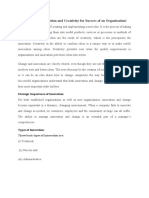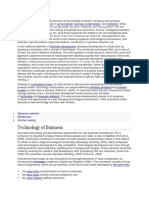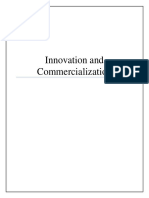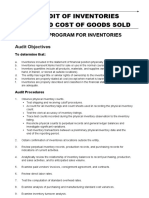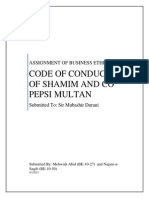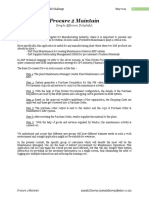At a glance
Powered by AI
The key takeaways are that companies must adopt a strategic approach to innovation to create and maintain sustainable competitive advantage in today's rapidly changing business environment.
Journal of Management, Marketing and Logistics -JMML (2017), Vol.4(3),p.290-300 Dogan
_______________
__________________________________________________________________________________ DOI: 10.17261/Pressacademia.2017.491
290
A STRATEGIC APPROACH TO INNOVATION
DOI: 10.17261/Pressacademia.2017.491 JMML-V.4-ISS.3-2017(11)-p.290-300 Ebru Dogan
I
stanbul University, Faculty of Economics, Department of Business Administration, İ
stanbul, Turkey. ebruseng@istanbul.edu.tr
To cite this document
Dogan, E., (2017). A strategic approach to innovation Journal of Management, Marketing and Logistics (JMML), V.4, Iss.3, p290-300.
Permemant link to this document:
http://doi.org/10.17261/Pressacademia.2017.491
Copyright:
Published by PressAcademia and limited licenced re-use rights only.
ABSTRACT
Purpose-
The aim of this study is to examine the concept of strategic innovation - which includes a strategic approach to innovation - within the framework of its antecedents, the elements forming it and the advantages provided to the company.
Methodology-
Theoretical analysis: Innovation has been analyzed from a strategic point of view by examining the current literature extensively.
Findings-
Along with the impact of globalization and the emerging new technologies, companies must manage the change by perceiving it as an opportunity to be able to sustain, grow and compete in a rapidly changing environment and respond to change with innovation.
Innovation reflecting the perspective of companies on change creates value through change. In today’s business world, there a
re true opportunities for the ones that can manage the process of change well. At this point, a company desiring to create value and maintain the sustainable competitive advantage should use innovation strategically.
Conclusion
- A strategic perspective on innovation leads the organization to look at the whole system beyond the product and the process in order to create value. Successful companies in innovation deal with it in a holistic and systematic approach by developing a fully integrated innovation strategy with its mission and objectives and by making organizational culture and organizational systems compatible with the strategy. Strategic innovation is a future-oriented concept that contains a creative discovery. The strategic consideration of innovation involves the use of appropriate strategic management techniques to increase the impact of innovation activities on growth and performance of the company.
Keywords
: Innovation, strategy, strategic innovation, strategic management, change.
JEL Codes:
M10, M13
1.
INTRODUCTION
Today's business environment has changed qualitatively from many directions since the late 1980s. An economy based on manufacturing and commodities has quickly become an economy where information, services, support and distribution issues are more important. This change has increased the importance of information workers being a new class of wealthy, educated and mobile people who see themselves as free in the seller's market. Along with the information age, the acceleration of technological change in almost every sector, besides the domination of information technologies, has created entirely new businesses, they have destroyed those who cannot adapt to this change and have created an ever increasing demand for innovation. New product, process, and distribution technologies provide powerful levers for creating competitive value. More companies have realized the importance of disruptive technologies; innovation has attained a potential that invalidates a product line or even an entire business division. Another fundamental trend has become the decoupling of consumer and labor markets. Consumer expectations are changing very rapidly and even similar customer groups can have very different preferences for the products they want to buy. Today, new technology has made it easier, faster and cheaper to reach target micro markets that were physically impossible and too expensive to reach in the past. Moreover, this tendency is self-sustaining and the ability of a company to serve sub-markets is accompanied by an increasing demand from customers for more specific presentations (Nadler&Thusman 1999: 48,49).
Year: 2017 Volume: 4 Issue: 3 Journal of Management, Marketing and Logistics
–
(JMML), ISSN: 2148-6670, http://www.pressacademia.org/journals/jmml



























